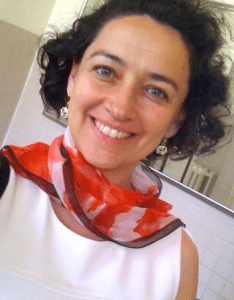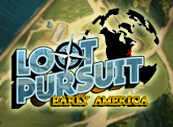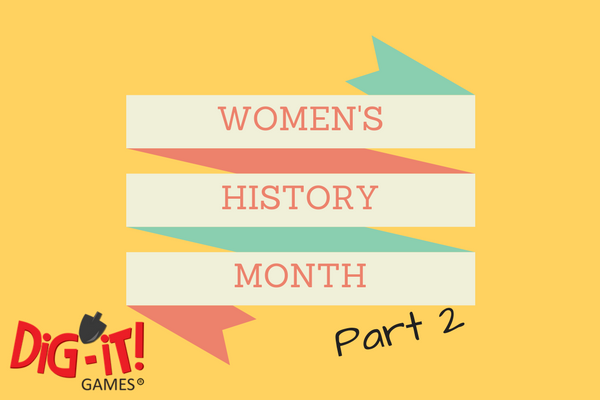The Women of Dig-It! Games Part 2
This is our second week of celebrating the women who work here at Dig-It! Games. We are enjoying this time to reflect and talk about the accomplishments of our coworkers. This week we have Melanie and Jes!
Melanie Stegman
 The first thing you should know is I started learning to code in C# when I was 44 years old. I learned some BASIC coding in high school, but our class spent weeks making a program that printed out a receipt like a cash register. I thought the whole process was stupid and boring. I knew that the Atari games I loved were created by programming, but programming is just memorization of a language written down by someone else. My 17-year-old self wanted to solve important, complicated problems. Real, important problems that required creative thinking were problems like: What causes cancer? What makes us feel stressed out? How does stress affect our immune system? Could we optimize our immune system to fight cancer better? So I threw myself into biochemistry. I loved it. I worked every single day for 3 years, and then for the next 7 years I decided to always take at least ½ a day off every weekend.
The first thing you should know is I started learning to code in C# when I was 44 years old. I learned some BASIC coding in high school, but our class spent weeks making a program that printed out a receipt like a cash register. I thought the whole process was stupid and boring. I knew that the Atari games I loved were created by programming, but programming is just memorization of a language written down by someone else. My 17-year-old self wanted to solve important, complicated problems. Real, important problems that required creative thinking were problems like: What causes cancer? What makes us feel stressed out? How does stress affect our immune system? Could we optimize our immune system to fight cancer better? So I threw myself into biochemistry. I loved it. I worked every single day for 3 years, and then for the next 7 years I decided to always take at least ½ a day off every weekend.
Whenever I interacted with non-scientists, people always said the same two things to me: 1) You don’t look like a scientist and 2) I have no idea what you are talking about. The second statement bothered me more, because what I was talking about were things that effect everyone every single day: cells, receptors, molecules in our bodies. If no one understands what I am talking about, then no one knows what cold medicine, anti-depressants, or sugar does in their bodies. If no one understands what a typical biomedical scientist is doing in the lab, then no one understands that we really need more funding for biomedical research! So, I decided the big complicated problem I would focus on would be teaching the average person how cells, receptors and molecules work. If everyone had this basic vocabulary then we could talk about health, the environment and funding for research much more clearly.
At the Federation of American Scientists (FAS) as the Director of the Learning Technologies Program, I conducted research on learning and confidence gains in players of the game Immune Attack. I published my research, designed and developed a follow up game called Immune Defense. Then the FAS decided not to work on learning games any longer. I chose to become an indie (independent) game developer because I wanted to focus on making games about cells and getting them onto people’s computers/devices.
 So! Age 44. Starting a career as indie game developer, I learned repeatedly that game development is difficult and time consuming. I also learned (again) how difficult and time consuming writing grants can be. I started working at Dig-It Games in November 2016. Here at DIG we share similar goals: Make games that teach important concepts that people really enjoy playing. I enjoy it here very much. I am developing an RPG about dinosaurs and helping design playtesting sessions and analyze data about learning in our educational games. My brain is challenged, my colleagues are a ton of fun, and I am learning new things every minute.
So! Age 44. Starting a career as indie game developer, I learned repeatedly that game development is difficult and time consuming. I also learned (again) how difficult and time consuming writing grants can be. I started working at Dig-It Games in November 2016. Here at DIG we share similar goals: Make games that teach important concepts that people really enjoy playing. I enjoy it here very much. I am developing an RPG about dinosaurs and helping design playtesting sessions and analyze data about learning in our educational games. My brain is challenged, my colleagues are a ton of fun, and I am learning new things every minute.
Everything I’ve done up to this point in my life allows me to be a valuable contributor to many different conversations in the studio. In my own time, I still work on my own molecular biology games; my work and personal goals synergize with each other. I continue to be a very happy “woman in tech.” And yeah, everyone still says I don’t look like a game developer, just like they used to say I didn’t look like a biochemist. Scientists and engineers on TV and movies still are usually men… the people doing the cool, meaningful things in stories are usually men. (Except for that fantastic Hidden Figures book/move!) The reason appearances matter is simple: tech and science (really anything you dedicate yourself to) will present a challenge sooner or later. Let me just tell you, it is a lot easier to ignore those voices of doubt when you have colleagues around you who treat you with respect. Find a place where people respect you, and don’t try to tough it out in an unfriendly environment. There are many places looking for people who enjoy solving problems, who help their colleagues face new problems. Wherever you are now you are gaining experiences that you can use in the future for solving new problems. Keep learning and keep looking for new jobs.
Just a thought, maybe we female tech people should wear shirts saying “This is what a game developer, graphic artist, QA expert, educational technical researcher, CEO looks like!”
Jes Mlyneic

 After five years teaching, I sought out a new adventure and added working at Dig-It! Games to my resume, which allowed me to create educational games and help other teachers learn how to incorporate and use games in their classroom. By working at Dig-It! Games, I have had the honor of working with teachers on how to use games in their classroom and have presented at ETIS in Baltimore, Montpelier, and the National Conference for Social Studies. Most recently, I have been accepted to present at ISTE in June on Game-Based Learning. By play-testing Excavate, Loot Pursuit: Early America and ExoTrex: Episode 1 both in-house and at school sites in Maryland and Virginia, I have been able to build relationships with both elementary and middle schools teachers. In my game portfolio, I have worked on Loot Pursuit: Early America and ExoTrex: Episode 1 and 2. Today, I work as a second-grade teacher when I am not working on projects and curricular materials for Dig-It! Games. The world of education is always changing, and most recently, I have been accepted to begin my graduate certificate in Education Leadership from George Washington University!
After five years teaching, I sought out a new adventure and added working at Dig-It! Games to my resume, which allowed me to create educational games and help other teachers learn how to incorporate and use games in their classroom. By working at Dig-It! Games, I have had the honor of working with teachers on how to use games in their classroom and have presented at ETIS in Baltimore, Montpelier, and the National Conference for Social Studies. Most recently, I have been accepted to present at ISTE in June on Game-Based Learning. By play-testing Excavate, Loot Pursuit: Early America and ExoTrex: Episode 1 both in-house and at school sites in Maryland and Virginia, I have been able to build relationships with both elementary and middle schools teachers. In my game portfolio, I have worked on Loot Pursuit: Early America and ExoTrex: Episode 1 and 2. Today, I work as a second-grade teacher when I am not working on projects and curricular materials for Dig-It! Games. The world of education is always changing, and most recently, I have been accepted to begin my graduate certificate in Education Leadership from George Washington University!

